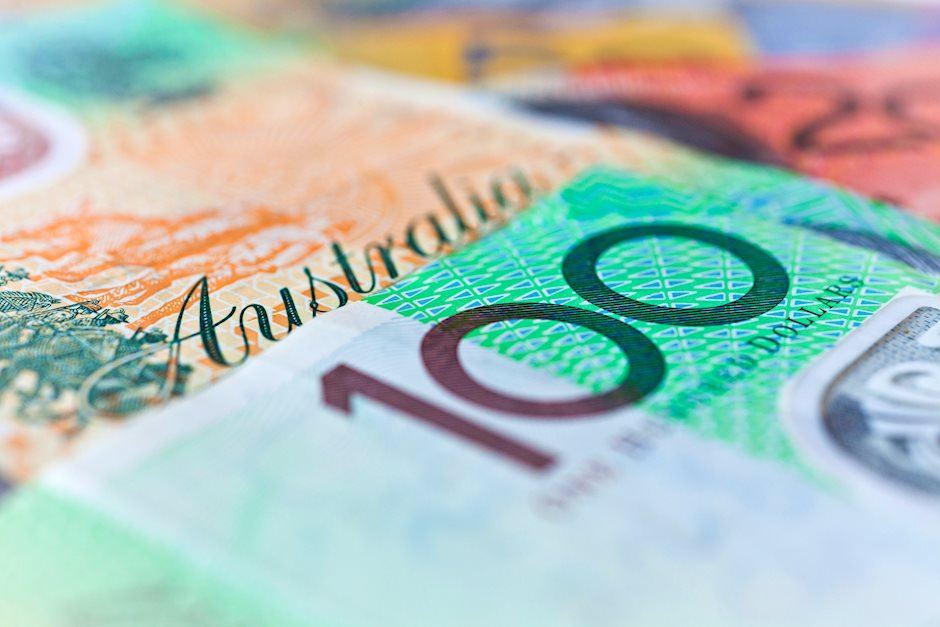Australian Dollar declines despite USD weakness
- AUD/USD declines despite USD weakness as expectations for US rate cuts rise sharply.
- Fed whisperer's comments suggest a close call on Fed's decision next week, raising the odds of a 50 bps cut to nearly 50%.
- RBA Governor Bullock remains hawkish, saying it is too soon to consider rate cuts due to high inflation.

The AUD/USD declined by 0.20% to 0.6710 in Friday's session. The Australian Dollar declined, while the US Dollar weakened following comments from a "Fed whisperer" suggesting a higher probability of a 50-basis-point rate cut at the Federal Reserve's (Fed) next meeting. In contrast, the Reserve Bank of Australia (RBA) remains hawkish, which lends support to the Aussie.
The Australian economic outlook is uncertain, with the Reserve Bank of Australia (RBA) maintaining a cautious approach due to elevated inflation. As a result, financial markets anticipate only a modest interest rate cut of 0.25% in 2024, reflecting a shift away from previous expectations of more significant easing. This cautious stance indicates the RBA's concern about inflation and its commitment to controlling price pressures while balancing the need for economic growth.
Daily digest market movers: Australian Dollar declines, downside limited by dovish Fed
- US Treasury Yields declined sharply across the Treasury curve following a report from the Wall Street Journal that suggested a 50bps cut at the FOMC meeting next week is possible.
- The CME FedWatch Tool shows that markets are fully pricing in a 25 bps rate cut at the meeting next week, with a 41% chance of a 50 bps cut.
- Nick Timiraos, a Wall Street Journal reporter known for having close ties to the Fed, suggested that the decision next week could be a close call.
- On the other hand, RBA Governor Michele Bullock has maintained a hawkish outlook, saying last week that it is too soon to consider rate cuts as inflation remains too high.
AUD/USD technical outlook: Pair shows mixed momentum facing resistance at the 20-day SMA
The pair declined by 0.20% in Friday's session, snapping a 2-day winning streak. The Relative Strength Index (RSI) is suggesting that buying pressure is declining, as it has dropped to 51 while the Moving Average Convergence Divergence (MACD) histogram is flat and red, suggesting that selling pressure is steady. The overall outlook is mixed, with the pair likely to continue trading sideways in the near term.Support levels can be identified at 0.6650, 0.6600 and 0.6550, while round resistance levels can be found at 0.6735 (20-day SMA), 0.6750 and 0.6800.
Australian Dollar FAQs
One of the most significant factors for the Australian Dollar (AUD) is the level of interest rates set by the Reserve Bank of Australia (RBA). Because Australia is a resource-rich country another key driver is the price of its biggest export, Iron Ore. The health of the Chinese economy, its largest trading partner, is a factor, as well as inflation in Australia, its growth rate and Trade Balance. Market sentiment – whether investors are taking on more risky assets (risk-on) or seeking safe-havens (risk-off) – is also a factor, with risk-on positive for AUD.
The Reserve Bank of Australia (RBA) influences the Australian Dollar (AUD) by setting the level of interest rates that Australian banks can lend to each other. This influences the level of interest rates in the economy as a whole. The main goal of the RBA is to maintain a stable inflation rate of 2-3% by adjusting interest rates up or down. Relatively high interest rates compared to other major central banks support the AUD, and the opposite for relatively low. The RBA can also use quantitative easing and tightening to influence credit conditions, with the former AUD-negative and the latter AUD-positive.
China is Australia’s largest trading partner so the health of the Chinese economy is a major influence on the value of the Australian Dollar (AUD). When the Chinese economy is doing well it purchases more raw materials, goods and services from Australia, lifting demand for the AUD, and pushing up its value. The opposite is the case when the Chinese economy is not growing as fast as expected. Positive or negative surprises in Chinese growth data, therefore, often have a direct impact on the Australian Dollar and its pairs.
Iron Ore is Australia’s largest export, accounting for $118 billion a year according to data from 2021, with China as its primary destination. The price of Iron Ore, therefore, can be a driver of the Australian Dollar. Generally, if the price of Iron Ore rises, AUD also goes up, as aggregate demand for the currency increases. The opposite is the case if the price of Iron Ore falls. Higher Iron Ore prices also tend to result in a greater likelihood of a positive Trade Balance for Australia, which is also positive of the AUD.
The Trade Balance, which is the difference between what a country earns from its exports versus what it pays for its imports, is another factor that can influence the value of the Australian Dollar. If Australia produces highly sought after exports, then its currency will gain in value purely from the surplus demand created from foreign buyers seeking to purchase its exports versus what it spends to purchase imports. Therefore, a positive net Trade Balance strengthens the AUD, with the opposite effect if the Trade Balance is negative.
Author

Patricio Martín
FXStreet
Patricio is an economist from Argentina passionate about global finance and understanding the daily movements of the markets.

















